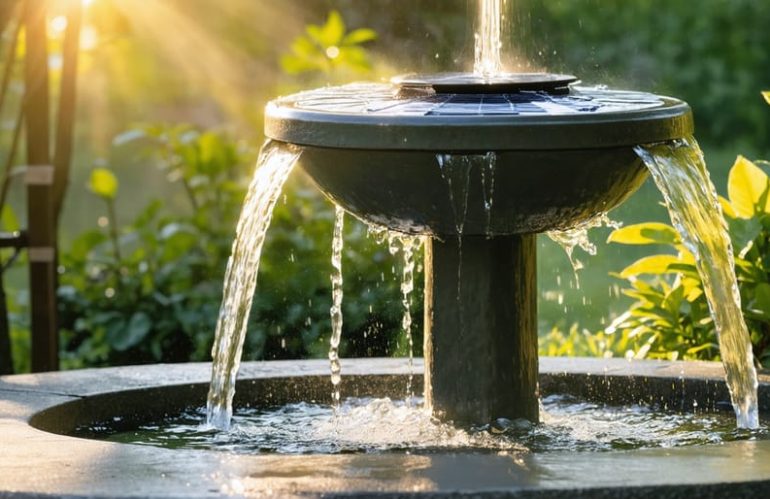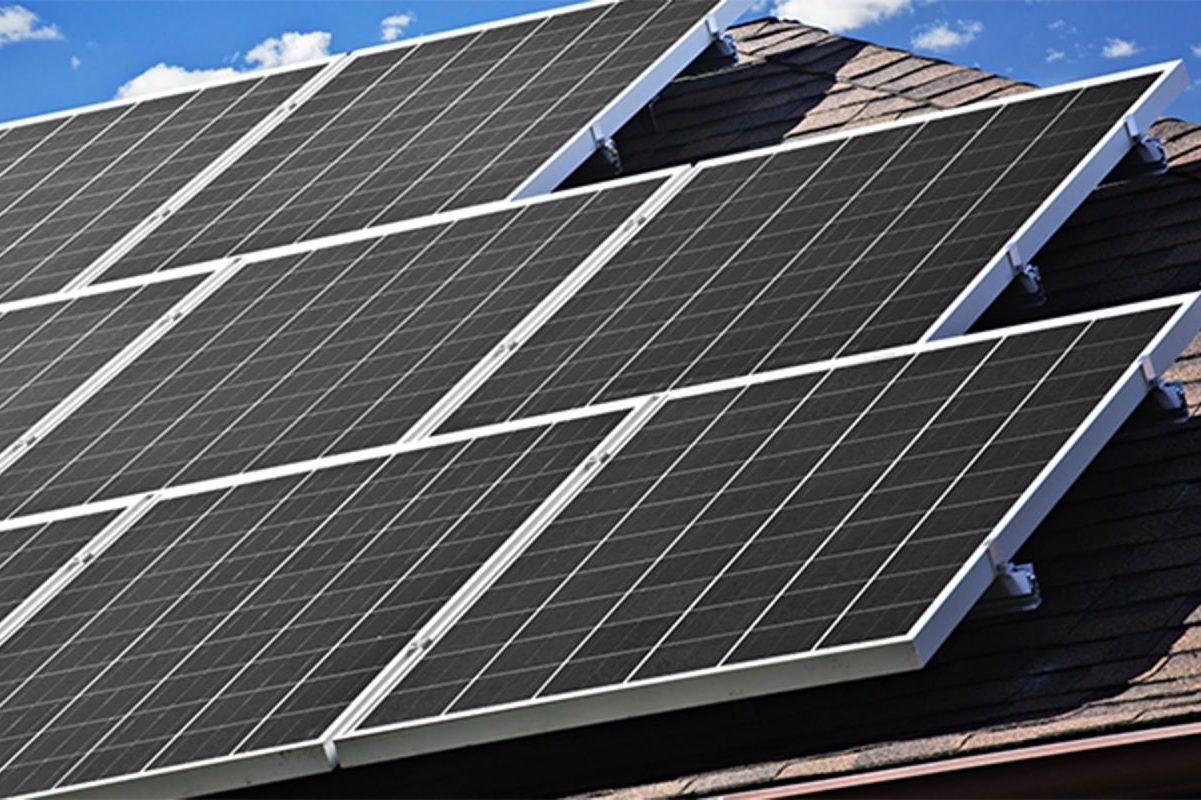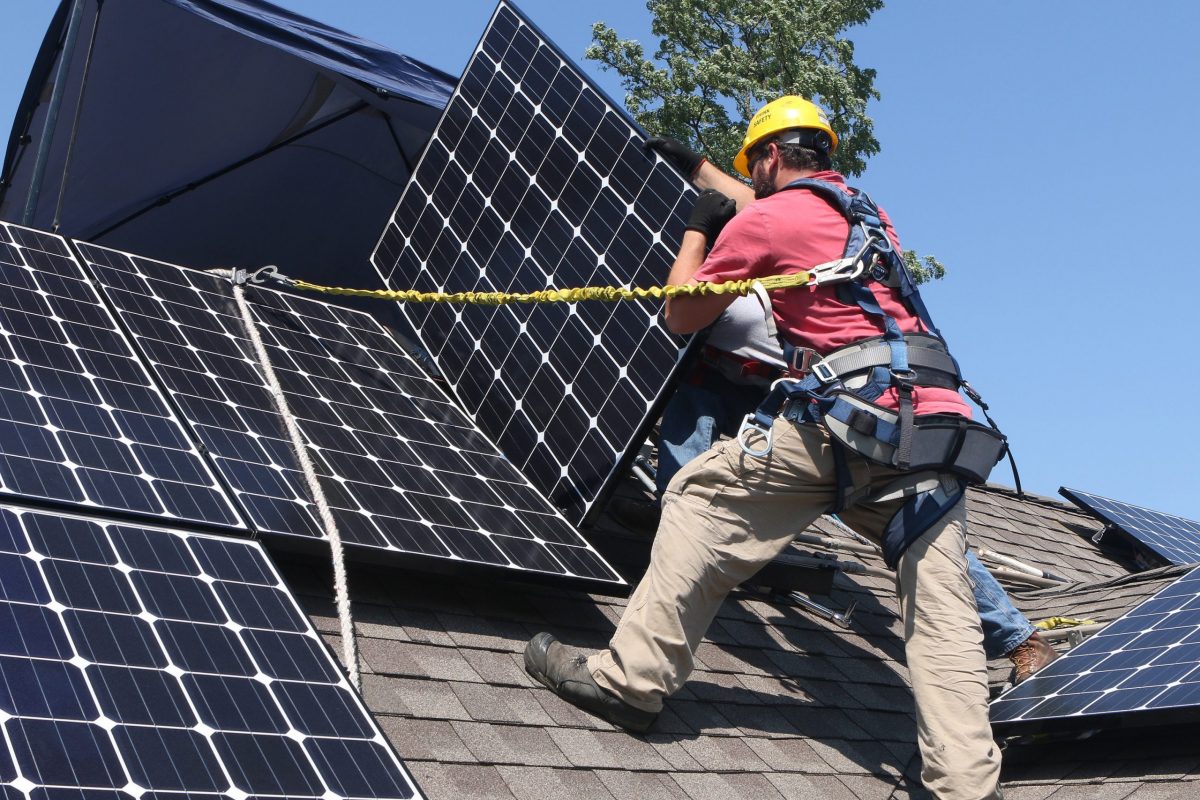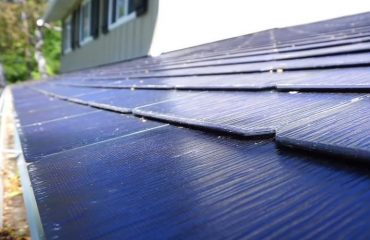Solar-powered water fountains have revolutionized outdoor water features by combining sustainable energy with aesthetic appeal. As homeowners increasingly seek eco-friendly alternatives for their gardens and patios, these innovative fountains offer a compelling solution that eliminates electricity costs while maintaining the soothing ambiance of flowing water. Unlike traditional electric fountains, solar-powered models harness the sun’s energy to create maintenance-free water displays that work most effectively during peak daylight hours – precisely when outdoor spaces see the most activity.
The technology has matured significantly in recent years, with modern solar fountains featuring improved pump efficiency, better battery storage options, and more sophisticated designs that rival their grid-powered counterparts. While they do have certain limitations, such as reduced performance during cloudy days or at night, the benefits of zero operating costs, simple installation, and environmental sustainability make them an increasingly popular choice for conscious homeowners. Understanding these advantages and limitations is crucial for making an informed decision about whether a solar-powered fountain is the right choice for your outdoor space.
How Solar Water Fountains Transform Your Water Quality
The Science Behind Solar Purification
Solar-powered water fountains operate through a fascinating yet straightforward process that harnesses the sun’s energy. Similar to solar panel integration for homes, these fountains use photovoltaic cells to convert sunlight into electrical energy. This powers both the pump system and the purification components.
The purification process typically involves multiple stages. First, the water passes through a mechanical filter that removes larger particles and debris. Then, depending on the model, the water may go through activated carbon filters that eliminate chemicals and improve taste. Some advanced systems also incorporate UV sterilization, which uses solar-powered ultraviolet light to neutralize harmful bacteria and microorganisms.
What makes this system particularly efficient is its self-sustaining nature. During peak sunlight hours, the solar panels generate more power, resulting in stronger water flow and more thorough purification. The system automatically adjusts its performance based on available sunlight, ensuring optimal operation while maintaining energy efficiency. This natural synchronization makes solar fountains both environmentally friendly and practically effective for home use.
Key Components and Features
Solar-powered water fountains consist of several essential solar components working together to create an efficient and sustainable water feature. The solar panel, typically mounted above the fountain or nearby, converts sunlight into electricity to power the pump. Most models include a high-quality submersible pump that circulates water through the fountain, creating the desired flow and aesthetic appeal.
A built-in battery storage system enables the fountain to operate during cloudy periods or after sunset, though this feature varies by model. The fountain head or nozzle determines the water pattern, with many units offering adjustable settings for different spray patterns. Some advanced models include LED lights for nighttime illumination and filters to keep the water clean.
The control system manages water flow and protects against damage from low water levels or pump overload. Many modern fountains also feature weather-resistant materials like durable plastic or ceramic, ensuring longevity in outdoor conditions. These components work harmoniously to create an eco-friendly water feature that enhances your outdoor space while remaining energy-efficient.
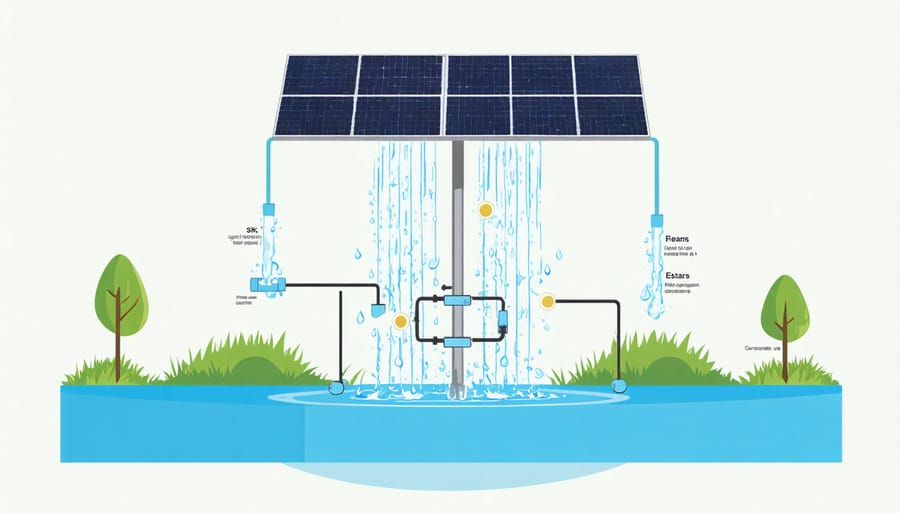
Real Benefits for Your Home
Energy Savings and Environmental Impact
Solar-powered water fountains offer significant environmental benefits while helping homeowners reduce their energy costs. Unlike traditional electric fountains that rely on grid power, solar fountains harness free energy from the sun, resulting in zero electricity costs for operation. A typical electric fountain can add $30-50 to your annual energy bill, making solar alternatives an attractive long-term investment.
The environmental impact is equally impressive. By choosing a solar fountain, you eliminate the carbon emissions associated with traditional power consumption. Over its lifetime, a single solar fountain can prevent approximately 500 pounds of CO2 from entering the atmosphere – equivalent to planting several trees.
These fountains are particularly efficient during peak summer months when the sun is strongest, which conveniently coincides with when you’re likely to use your fountain most. The latest solar panel technology allows for better energy conversion, meaning even cloudy days won’t completely halt your fountain’s operation.
Additionally, solar fountains contribute to water conservation. Many models are designed with recirculating systems that minimize water waste through evaporation. The self-contained nature of these fountains also means you’re not tapping into municipal water supplies for continuous operation.
For environmentally conscious homeowners, solar fountains represent a perfect blend of aesthetic appeal and sustainable living, offering both immediate and long-term benefits for the planet and your wallet.
Water Quality Improvements
Solar-powered water fountains offer several notable improvements to water quality, making them an excellent choice for both decorative and practical purposes. The constant circulation of water prevents stagnation, which naturally reduces algae growth and mosquito breeding. This movement also helps maintain optimal oxygen levels, creating a healthier environment for any aquatic plants or fish you might have in your fountain.
Many solar fountain systems come equipped with built-in filtration mechanisms that remove debris, leaves, and other particles from the water. These filters work continuously during daylight hours, keeping the water cleaner for longer periods. The natural purification process is enhanced by exposure to sunlight, which helps eliminate certain harmful bacteria through UV radiation.
The chemical-free operation of solar fountains means you won’t need to add as many artificial treatments to maintain water quality. This makes them particularly appealing for gardens where children and pets play nearby. The consistent water movement also helps regulate temperature, preventing excessive heating during summer months which could otherwise promote bacterial growth.
For those living in areas with hard water, the continuous circulation helps prevent mineral buildup and scaling on fountain surfaces. This not only keeps the fountain looking better but also extends its lifespan. The gentle aeration process can even help reduce unpleasant odors that sometimes develop in standing water features.
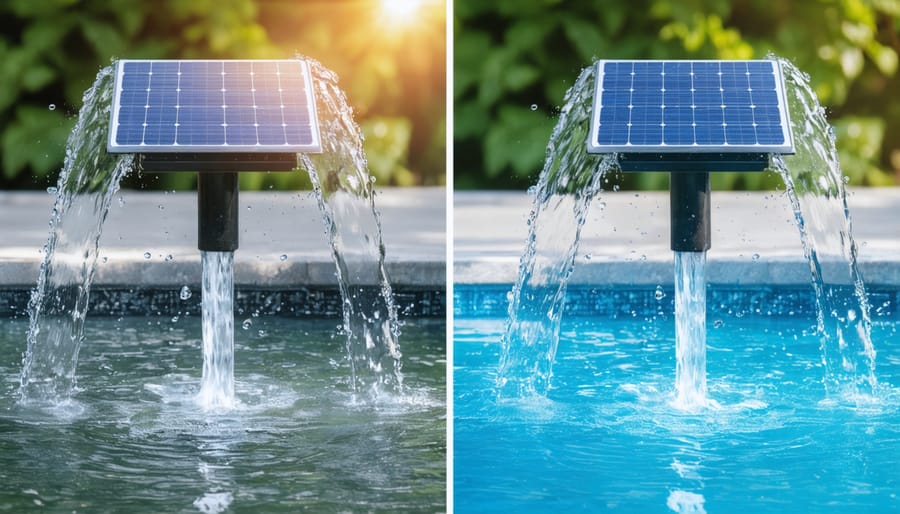
Common Concerns Addressed
Performance in Different Weather
Solar-powered water fountains perform differently depending on weather conditions, but they’re more reliable than you might think. On sunny days, these fountains operate at peak efficiency, with most models storing excess energy for later use. During partly cloudy conditions, the fountain will continue to run, though possibly at a slightly reduced flow rate.
Even on overcast days, quality solar fountains can still function thanks to their ability to harness diffused sunlight. Many modern models come with backup batteries that kick in during less-than-ideal conditions, ensuring consistent operation. These batteries typically provide enough power to keep the fountain running for several hours after sunset or during periods of limited sunlight.
During winter months, performance may vary depending on your location. While reduced daylight hours will affect operation time, the fountains can still work effectively during sunny winter days. Some users choose to bring their fountains indoors during freezing temperatures to prevent damage.
Rain doesn’t typically interfere with operation, as solar panels are designed to be weather-resistant. However, heavy storms might temporarily reduce efficiency. To maximize performance year-round, it’s recommended to adjust the solar panel’s angle seasonally and keep it clean from debris and dust.
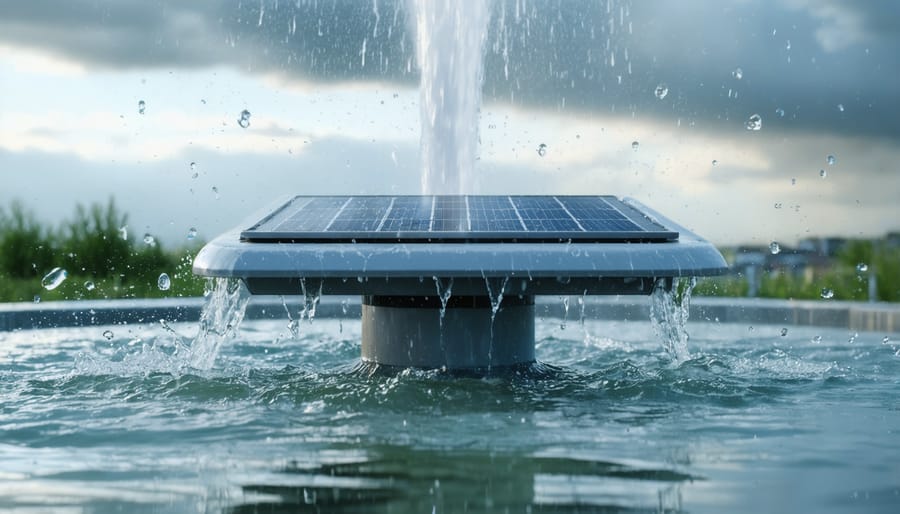
Maintenance and Longevity
Solar-powered water fountains are remarkably low-maintenance compared to traditional electric fountains. Regular cleaning every 2-3 months and occasional filter changes are typically all that’s needed to keep them running smoothly. The solar panels themselves require minimal upkeep – just wipe them clean periodically to remove dust and debris that might reduce efficiency.
Most quality solar fountains last between 2-5 years with proper care, though the solar panels can function effectively for up to 10 years. The pump is usually the first component to need replacement, but these parts are generally inexpensive and easily available. To extend your fountain’s lifespan, consider bringing it indoors during harsh weather conditions and ensuring the water level stays consistent to prevent pump damage.
The durability of modern solar fountains has improved significantly, with many featuring weather-resistant materials and UV-protected solar panels. Some models even include battery backup systems that can extend operational hours and protect components from power fluctuations. While initial costs might be slightly higher than traditional fountains, the minimal maintenance requirements and longer lifespan make them a cost-effective choice for environmentally conscious homeowners.
Making the Right Choice
When selecting a solar-powered water fountain, several key factors will help ensure you maximize your solar system efficiency and satisfaction. First, consider your location’s sun exposure – areas receiving 6+ hours of direct sunlight daily are ideal. The fountain’s size should match your space and desired water flow, with larger models requiring more solar power to operate effectively.
Look for fountains with built-in battery backup systems, which maintain operation during cloudy periods or after sunset. Quality matters – choose models with durable materials like polyresin or weather-resistant metals that can withstand outdoor elements. The pump’s capacity should align with your fountain’s size; generally, 200-400 GPH works well for most home installations.
Pay attention to the solar panel’s positioning flexibility. Models with separate panels offer better placement options than those with integrated panels, allowing you to optimize sun exposure while keeping your fountain in a shaded area if desired. Consider additional features like LED lights or adjustable flow rates, which enhance functionality but may require more solar power.
For year-round use, select fountains rated for your climate zone and check if they include freeze protection features. Most importantly, choose from reputable manufacturers offering solid warranties and customer support, ensuring long-term satisfaction with your sustainable water feature.
Solar-powered water fountains prove to be an excellent investment for environmentally conscious homeowners. They offer significant advantages, from eliminating electricity costs to providing sustainable outdoor decoration without compromising on performance. The combination of renewable energy, low maintenance requirements, and versatile design options makes them a practical choice for any garden or outdoor space. While initial costs might be higher than traditional fountains, the long-term savings and environmental benefits far outweigh this investment. By choosing a solar fountain, you’re not just creating a beautiful water feature – you’re making a positive impact on the environment and your utility bills. Consider making the switch to solar power for your outdoor water features and join the growing community of sustainable homeowners enjoying the benefits of clean, renewable energy.

